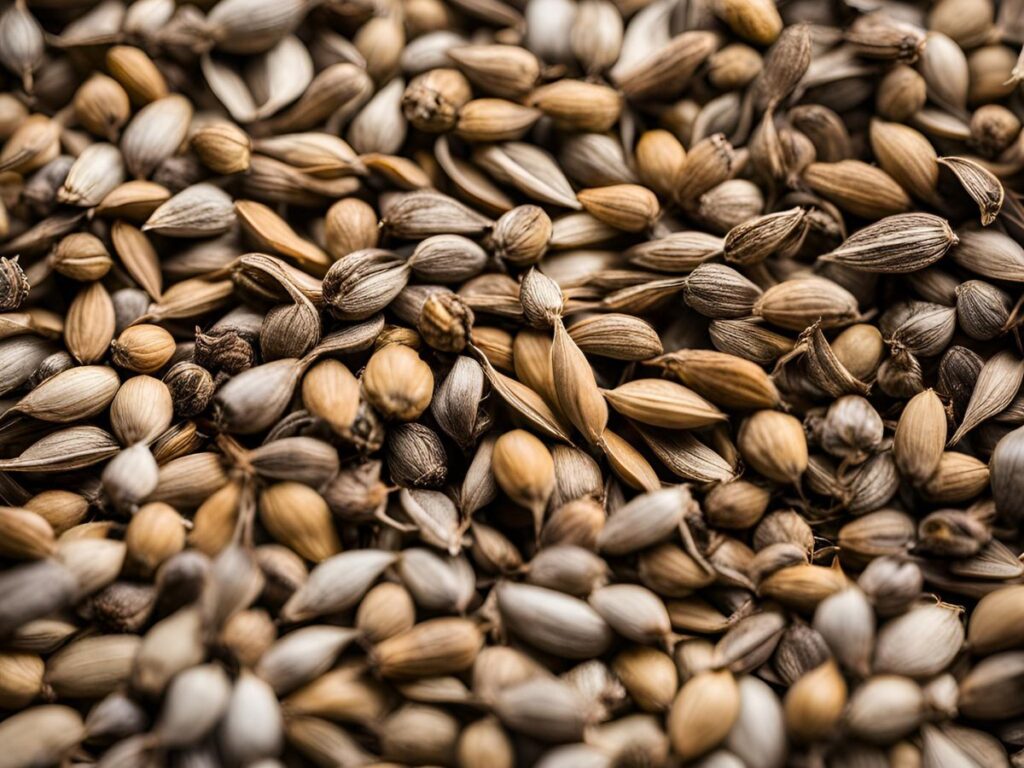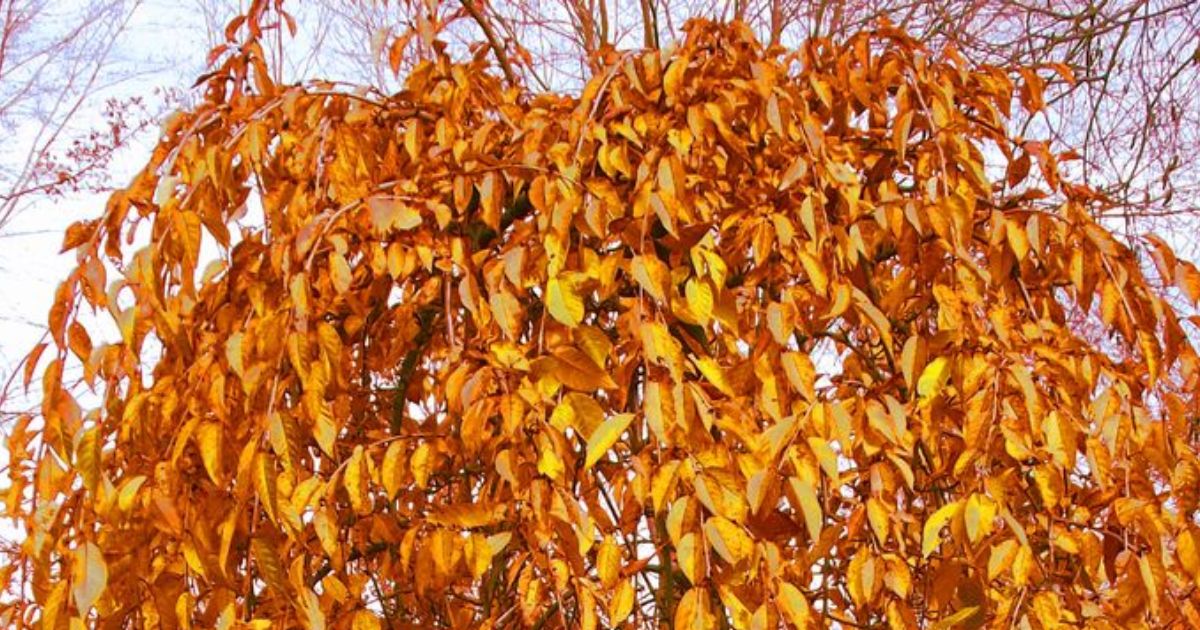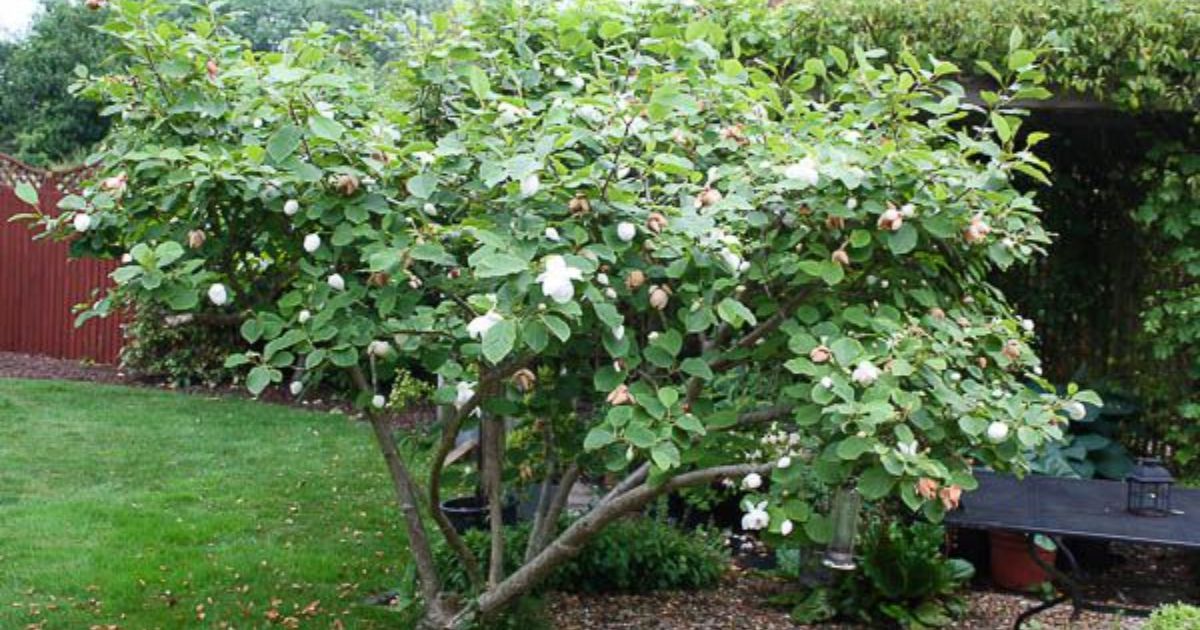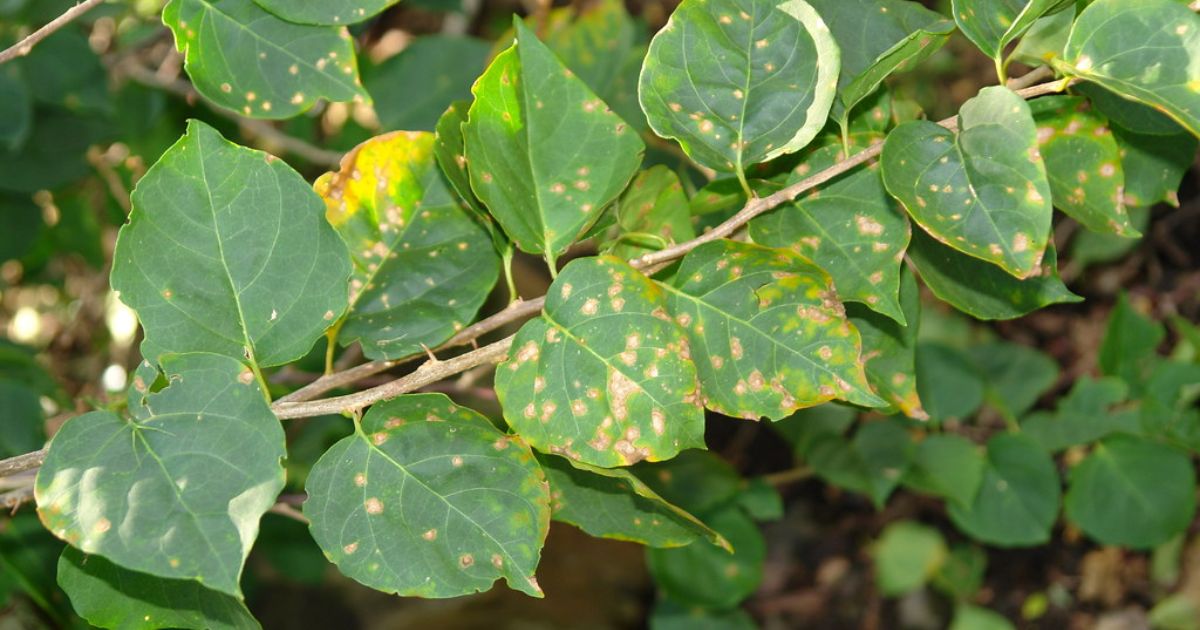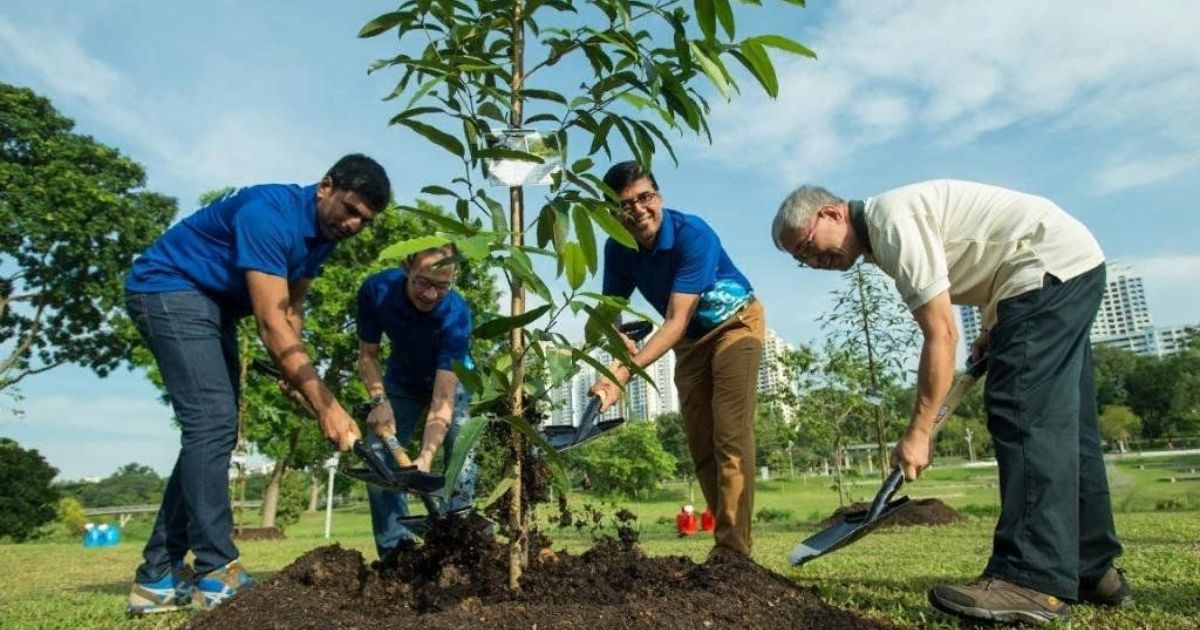As gardeners, we’ve all found a forgotten packet of seeds tucked away in a drawer or shed and wondered, “How long do old seeds last?” It’s a common dilemma—seeds can lose potency over time, but that doesn’t necessarily mean they’re no longer helpful. The lifespan of seeds depends on several factors, such as the type of seed, how they’ve been stored, and how much time has passed since they were harvested. While some seeds can remain viable for years, others may only last a season or two before their germination rate declines.
Before you toss out that old packet of seeds, it’s worth checking if they’re still good to plant. You can look for several signs to determine whether your old seeds have retained their vitality. In this article, we’ll explore the lifespan of various seeds, key signs that indicate your seeds are still viable, and how to test their germination rate before planting. With the proper care and attention, those old seeds could still grow into thriving plants, saving money and providing a satisfying gardening experience.
Understanding Seed Longevity
Seed longevity varies significantly depending on the type of seed and the conditions under which it is stored. Each plant species has a different natural lifespan, with some seeds able to survive for several years while others may only remain viable for a season or two. Understanding how long can seeds be stored and the factors that impact their longevity can help gardeners maximize the potential of their old seeds.
Seed Lifespan by Type
Different types of seeds have varying lifespans, influenced by their genetic makeup and natural environment. For example:
- Vegetable Seeds: Most vegetable seeds, like carrots, cucumbers, and lettuce, typically last 1 to 3 years when stored properly. Certain hardy vegetables, such as beans and peas, can last up to 5 years, while others, like spinach or onions, may only remain viable for 1 to 2 years.
- Flower Seeds: Flower seeds generally have a slightly longer lifespan, with annuals like marigolds lasting 1-3 years and perennials like lavender or echinacea remaining viable for 2-4 years. However, some flowers, like poppies, can last even longer under optimal conditions.
- Herb Seeds: Herb seeds like basil, cilantro, and parsley often have shorter lifespans, usually lasting 1 to 2 years. On the other hand, herbs such as rosemary or thyme can maintain viability for 3 years or more if stored properly.
In general, larger seeds (like beans or corn) tend to last longer than smaller seeds (like lettuce or parsley) due to their energy reserves and protective coatings. However, it’s essential to consider storage conditions to ensure seed longevity.
Factors Affecting Seed Life
The lifespan of seeds can be significantly influenced by external conditions, which is why understanding proper seed storage techniques is crucial for extending their viability. The key factors that affect seed life include:
- Temperature: Seeds should be stored in a calm environment, typically between 40°F (4°C) and 50°F (10°C). Extreme heat can cause seeds to age prematurely and reduce their germination rate, while freezing temperatures may damage delicate seeds. A stable, moderate temperature is ideal for preserving seed life.
- Moisture: One of the most critical factors in seed longevity is moisture. Seeds should be kept dry, as excess moisture can promote mould and fungal growth, destroying the seed. Too little moisture, however, can cause the seed to dry out and lose viability. Storing seeds in airtight containers with desiccants (like silica gel) can help prevent moisture from affecting them.
- Light Exposure: Seeds should be stored in dark conditions, as light can cause chemical reactions that degrade their quality. Exposure to light can cause seeds to begin sprouting prematurely or lead to the loss of essential nutrients. Keeping seeds in opaque, airtight containers away from direct light ensures they remain dormant.
- Seed Quality: Freshly harvested seeds from healthy, mature plants tend to have higher germination rates than older, damaged, or poorly stored seeds. The quality of the seeds when they are first collected can significantly affect their longevity.
- Seed Variety: Some seed varieties are naturally more resilient than others. For instance, heirloom seeds and open-pollinated varieties may have a longer shelf life than hybrid seeds, which often lose their ability to produce viable offspring after a few generations. Some seed varieties have built-in resistance to environmental stressors, which can contribute to more extended longevity.
By understanding the lifespan of different seed types and the factors that affect seed longevity, gardeners may decide when to plant based on knowledge old seeds and how to store them to maximize their viability. Proper storage is key to ensuring that old seeds remain productive for as long as possible, giving gardeners the best chance to successfully grow plants from even the most seasoned packets.
How Long Do Old Seeds Last?
There’s no one-size-fits-all answer to determining how long old seeds last. Seed lifespan can vary depending on the type of plant, storage conditions, and the age of the seed itself. While many seeds retain their viability for several years, others may lose their germination ability after only a season or two. Understanding the general lifespan of different types of seeds do seeds expire and how age affects their germination rate can help gardeners make informed decisions about planting older seeds.
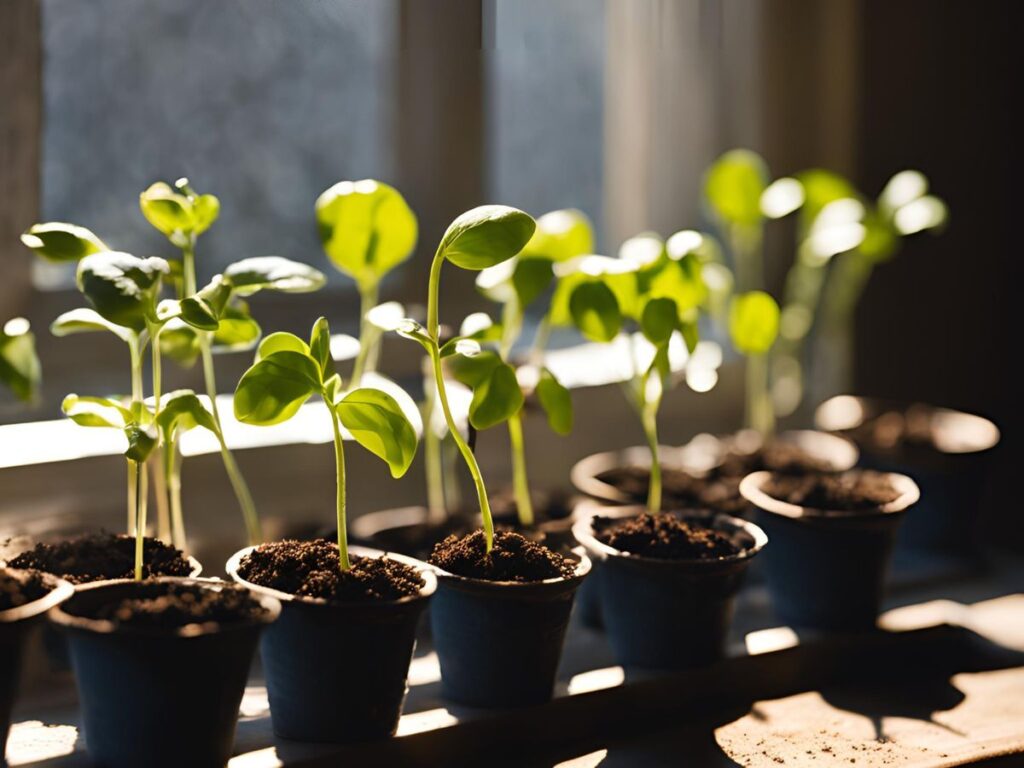
General Lifespan of Seeds
Each type of seed has a different lifespan, with some being more resilient than others. The following table outlines the approximate lifespan of various seeds when stored under ideal conditions (cool, dry, and dark storage).
| Seed Type | Approximate Lifespan |
|---|---|
| Leafy Greens (e.g., Lettuce, Spinach) | 1-2 years |
| Root Vegetables (e.g., Carrots, Beets) | 2-3 years |
| Beans & Peas | 3-5 years |
| Tomatoes | 4-6 years |
| Herbs (e.g., Basil, Parsley) | 1-2 years |
| Flower Seeds (Annuals) | 1-3 years |
| Flower Seeds (Perennials) | 2-4 years |
| Squash & Pumpkins | 3-4 years |
| Cucumbers | 5 years |
| Corn | 3-5 years |
| Peppers | 2-4 years |
| Melons | 4-5 years |
Note: This table provides approximate lifespans for seeds appropriately stored. Some seeds, like beans and corn, can last several years, while others, like leafy greens, may lose their viability faster. Always check the packaging or seed company recommendations for specific seed types.
Impact of Age on Germination
As seeds age, their germination rates gradually decline. This means that older seeds may take longer to sprout or fail to germinate altogether. The decline in germination rates can be attributed to several factors, including:
- Loss of Viability: As seeds age, the internal tissues that support growth, such as the embryo, begin deleting. Over time, this reduces the seed’s ability to sprout successfully.
- Diminished Energy Reserves: Seeds rely on stored energy to fuel the initial stages of germination. As seeds age, the energy reserves in the seed coat and embryo may decrease, making it harder for the seed to produce a healthy plant.
- Environmental Factors: Seeds exposed to fluctuating temperatures, excess moisture, or light during storage are more likely to lose viability quickly. Proper seed storage helps preserve seeds’ internal structure, extending their shelf life.
Despite the inevitable decline in germination rates, older seeds can still grow if viable. A germination test helps determine whether old seeds are worth planting. If a seed batch shows low germination, you should plant extra seeds for a lower success rate.
Germination Test
A simple way to assess the viability of old seeds is to perform a germination test. Here’s how:
- Place 10-20 seeds on a damp paper towel.
- Fold the towel over the seeds and place it in a warm location (about 70-80°F or 21-27°C).
- Check regularly for sprouting over 7-10 days.
- Count how many seeds have sprouted. If more than half have germinated, the seeds are still viable and can be planted. If less than half have sprouted, you should sow extra seeds for a good harvest.
Understanding the general lifespan of seeds and how age affects germination can help you make better decisions about planting old seeds. Even if your seeds are a few years past their prime, it’s worth testing them to see if they’re still good to plant. Even old seeds can grow into healthy, thriving plants with proper care and attention.
Signs That Your Seeds Are Still Good to Plant
Before planting old seeds, assessing their viability is essential to ensure they can still sprout and grow into healthy plants. There are several physical indicators to watch out for and easy tests you may do to check whether your seeds are still good to plant. Here’s how you can evaluate your seeds to see if they’re worth using:
Physical Signs to Look For
The appearance of your seeds can provide valuable clues about their viability. Healthy seeds should have a firm texture and a uniform colour, while damaged or old seeds may show visible signs of deterioration. Look for these common signs:
- Mold or Fungal Growth: Mold on seeds is a clear indicator that they’ve been exposed to excessive moisture or humidity, leading to decay. Moldy seeds are not viable and should be discarded.
- Discolouration: Seeds that have faded in colour, become darker than usual, or show spots of discolouration may be past their prime. Seeds that have turned brown, grey, or black (especially if they’re typically lighter in colour) might have lost their viability.
- Cracking or Splitting: Some seeds naturally have hard outer coats, but if you notice any cracks or splits in the seed, it may no longer be able to germinate. A cracked seed cannot protect the embryo, making it more susceptible to drying out or mould growth.
- Brittleness: When seeds become brittle and break easily between your fingers, it’s a sign that they may have lost their moisture content and dried out too much. Dry, brittle seeds often have lower chances of sprouting.
- Inconsistent Shape or Size: If seeds appear misshapen or abnormally small, they may have been damaged or poorly stored. Uniform shape and size are indicators of healthy seeds.
If your seeds exhibit these signs, they are likely no longer viable and should not be planted. On the other hand, seeds that appear dry but intact may still be good to plant if stored properly.
Test for Germination
One of the most reliable ways to determine if old seeds are still viable is to test their germination rate. This simple method involves using a damp paper towel or soil to simulate the conditions needed for sprouting.
- Paper Towel Test:
- Take 10-20 seeds and place them on a damp paper towel.
- Fold the towel over the seeds and place it in a warm, dark spot (ideally around 70-80°F or 21-27°C).
- Keep the towel moist but not soaking wet. Check the seeds every few days.
- After about 7-10 days, check how many seeds have sprouted. If most seeds have germinated (usually 70% or more), they are still viable and can seeds go bad be planted.
- If very few or none of the seeds have sprouted, it indicates that the seeds have lost their viability and may not grow when planted.
- Soil Test:
- You can also test seeds by planting them directly in a small soil container.
- Plant 5-10 seeds in a small pot and water the soil lightly.
- Keep the soil warm and moist, and monitor the seeds over a couple of weeks to see if they sprout.
- This method effectively tests seeds that may need more time to sprout or require specific conditions to germinate.
Smell Test
The smell of your seeds can also provide important clues about their viability. Fresh seeds typically have a neutral or faintly earthy scent. However, if your seeds smell musty or rotten, it’s a strong sign that they’ve gone do seeds go bad. This unpleasant odour indicates that the seeds are likely exposed to moisture or mould, causing them to deteriorate.
- Musty or Sour Smell: Seeds that smell musty or sour may have been compromised by mould, mildew, or rot. These seeds should be discarded as they are unlikely to germinate and could introduce disease to your garden.
- Fresh and Earthy: Healthy seeds, when properly stored, will not have a strong odour and will retain a fresh, earthy scent. They’re more likely to remain viable if they smell clean and natural.
By looking for physical signs, performing germination tests, and using the smell test, you can accurately assess whether your old seeds are still good to plant. Even if your seeds are several years old, they may still have the potential to sprout if they’re stored properly and show no signs of decay. However, if they exhibit any of the negative signs listed above, investing in fresh seeds is best for the chance of a successful harvest.
How to Store Seeds for Maximum Longevity
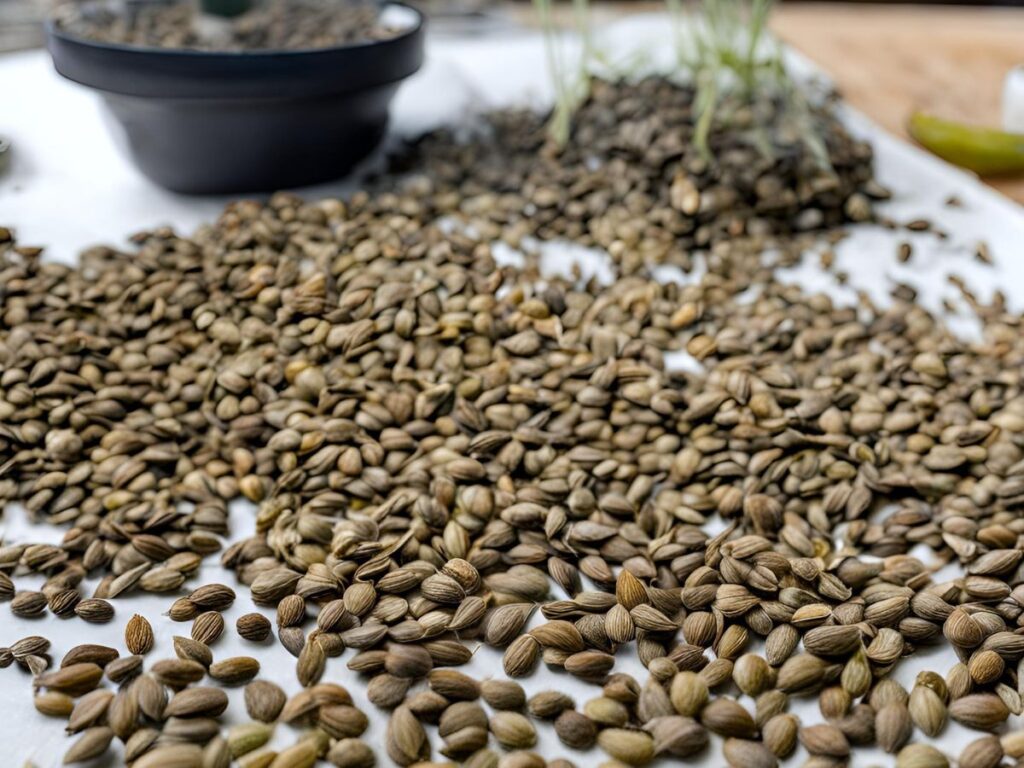
Proper seed storage is crucial for extending your seeds’ life and ensuring they remain viable for future planting. By taking a few simple steps to store seeds in the right conditions, you can preserve their germination ability for years. Here’s how to store your seeds to maximize their longevity:
Proper Storage Techniques
To keep seeds viable for as long as possible, storing them in conditions that protect them from moisture, extreme temperatures, and light is essential. Here are the best storage practices:
- Cool, Dry, and Dark Environment:
- Cool: Store seeds in a location that maintains a consistent temperature between 32°F to 41°F (0°C to 5°C). A cool temperature slows the seed’s metabolic processes, helping it stay dormant longer.
- Dry: Moisture is one of the primary enemies of seeds. Too much moisture can cause seeds to rot or grow mould. Aim to store seeds in a dry environment with around 20-40% humidity. If you live in a particularly humid area, consider using silica gel packets or desiccants to absorb excess moisture.
- Dark: Light can trigger seeds to start germination, which is not ideal when you’re trying to store them for later. Choose a dark, cool place like a closet, drawer, or pantry to keep seeds out of direct sunlight.
- Avoid Extreme Temperature Fluctuations: Consistent temperature is key to maintaining seed longevity. Avoid areas with temperature extremes, such as garages or attics, which experience fluctuations between hot and cold that can affect seed viability. A refrigerator or cool storage cabinet can be ideal for long-term storage.
Use Airtight Containers
It is best to keep seeds in sealed containers to avoid moisture and air exposure. This will preserve them in the best possible long-term condition while shielding them from moisture and pests. Among the better choices are:
- Glass Jars: Mason jars or other glassware that has tight-fitting lids are popular choices for seed storage. They seal in the air and prevent moisture from getting inside. Glass is also non-reactive, meaning it won’t release substances that could affect seed quality over time.
- Plastic Containers: Airtight plastic containers, such as Tupperware or small plastic storage bins, can also work well for seed storage. Ensure the container has a tight seal to keep moisture and air out.
- Seed Envelopes: In bulk, using seed storage envelopes (often made of paper or mylar) inside larger airtight containers is a great solution. These envelopes allow you to separate different seed varieties while offering a barrier against moisture.
- Vacuum Sealing: For extra protection, consider vacuum-sealing your seeds. This removes air and creates a tight, moisture-proof environment that can significantly prolong seed viability.
Label and Date the Packets
Labelling your seed storage containers is essential for keeping track of your seeds’ age and ensuring you don’t plant old seeds by mistake. Here’s how to label your seed packets for the best results:
- Include the Date: Always write the date you stored the seeds, which will help you track their age and manage them accordingly. If you purchase pre-packaged seeds, note the expiration date printed on the packet.
- Include Seed Variety Information: For better organization, write down the name of the plant variety and any additional details (e.g., specific cultivar, batch number, or supplier). This will help you quickly identify the seeds, especially if you store multiple varieties.
- Keep Track of Seed Lifespan: Consider noting the recommended lifespan or best-before date for each seed variety based on the type. This will help you monitor which seeds should be used first to avoid planting seeds that have reached or passed their expiration date.
Properly storing your seeds in cool, dry, and dark conditions, using airtight containers to prevent moisture, and labeling them with the date and variety information can seeds go bad significantly extend their lifespan. These simple storage techniques help ensure that your seeds remain viable and ready for planting, maximizing your chances of a bountiful harvest each and every year.
Testing Old Seeds for Germination
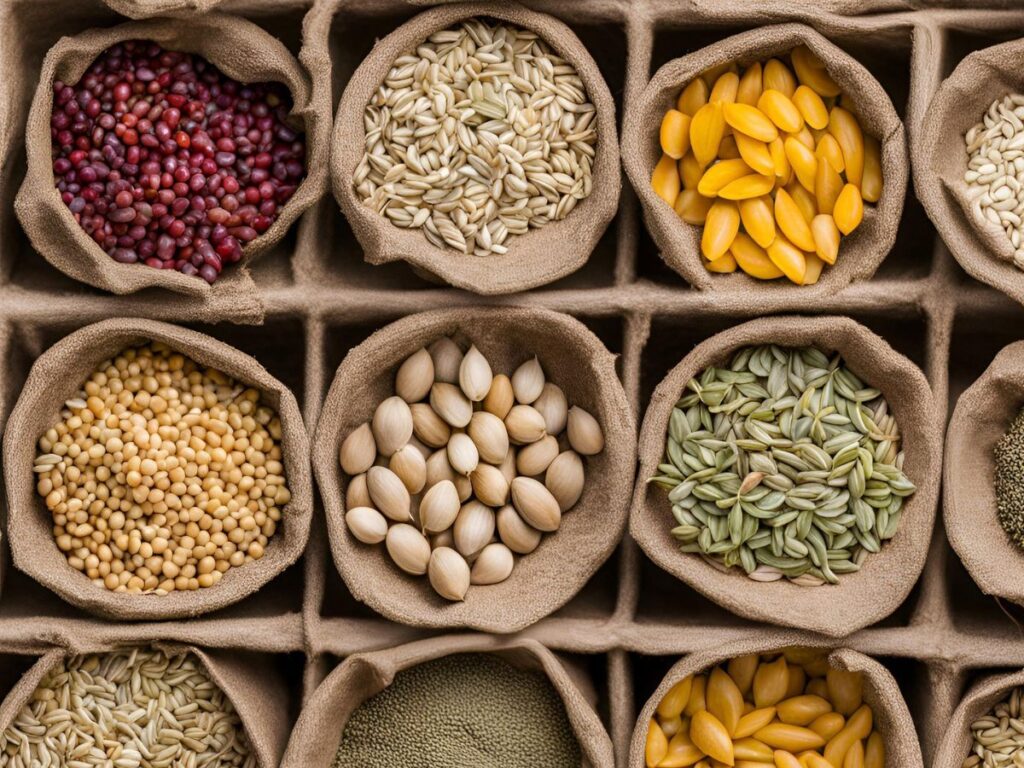
A simple germination test can answer you if you have old seeds and are unsure whether they will still germinate. This process helps you determine if your seeds are lettuce seeds after expiration date and whether they have a good chance of sprouting when planted. Here’s how to test your old seeds for germination: banana flower side effects
Germination Test Step-by-Step
Testing your old seeds is easy and requires only a few materials. Here’s a step-by-step guide to testing seed viability using a damp paper towel:
- Gather Materials:
- Paper towels (preferably plain, non-printed)
- A plate or shallow dish
- Water
- Your old seeds
- A plastic bag or plastic wrap (optional, to maintain moisture)
- A warm spot (e.g., near a radiator or on top of the refrigerator)
- Prepare the Paper Towel:
- Lay out a paper towel on the plate or shallow dish.
- Dampen the paper towel with water. It should be moist but not soaked, as excess water can drown the seeds.
- Gently squeeze out any excess water to ensure the towel is not dripping.
- Place the Seeds on the Towel:
- Evenly, space 10-20 seeds (depending on your number of seeds) on the damp paper towel. You how long do seeds last in packets use separate towels for each type to test several different seed varieties at once.
- Leave some space between the seeds to allow them to sprout without crowding.
- Fold the Towel and Cover:
- To make a tidy package, fold the paper towel over the seeds or cover with another damp paper towel. This encourages germination by retaining moisture and producing a miniature greenhouse effect.
- Place the setup in a plastic bag or cover it with plastic wrap to ensure a warm and humid environment. This can help maintain consistent moisture levels.
- Place in a Warm Location:
- Put the plate with the paper towel in a warm, dark location with temperatures between 70°F to 80°F (21°C to 27°C). A kitchen counter or shelf near a heat source works well.
- Check the paper towel periodically to ensure it remains moist, but avoid soaking it, as too much water can hinder germination. catfacing on tomatoes
- Wait for Germination:
- After 5-10 days, check the seeds for sprouting signs. The precise time will change based on the type of seed, but most seeds should begin showing signs of germination within this timeframe.
- Once you notice roots or small shoots emerging from the seeds, you’ll know they are viable. Check the towel daily to track progress.
Percentage of Viable Seeds
Once the test period is over, it’s time to evaluate how many of your old seeds how long do seeds keep. Here’s how to calculate the viability percentage:
- Count the Seeds That Germinated:
- Count the number of the tested seeds that have sprouted, measuring from the first sign of root or shoot emergence.
- Calculate the Viability Percentage:
- Divide the number of seeds germinating by the total number you tested.
- Multiply the result by 100 to get the percentage of viable seeds.
- Formula:
- Viability Percentage=(Number of Germinated SeedsTotal Number of Tested Seeds)×100\text{Viability Percentage} = \left( \frac{\text{Number of Germinated Seeds}}{\text{Total Number of Tested Seeds}} \right) \times 100Viability Percentage=(Total Number of Tested SeedsNumber of Germinated Seeds)×100
- Example:
- If you tested 10 seeds and 7 of them sprouted, the calculation would be:
- Viability Percentage=(710)×100=70%\text{Viability Percentage} = \left( \frac{7}{10} \right) \times 100 = 70\%Viability Percentage=(107)×100=70%
- In this case, 70% of the seeds are still viable and capable of germination.
Interpreting the Results
- High Viability (80%-100%): If most of your seeds have sprouted, your old seeds are still in good condition and can be safely planted.
- Moderate Viability (50%-80%): If only about half of the seeds sprouted, they may still be viable for planting, but you may want to plant more seeds to compensate for the reduced germination rate.
- Low Viability (Below 50%): If less than half of the seeds germinated, the seeds are likely too old to be viable and should be replaced with fresh ones for the best chance of success.
By testing your old seeds for germination, you can clearly understand their viability and make informed decisions about whether to plant or discard them. How long do seeds last simple test helps prevent wasting time and effort planting seeds that may not sprout, ensuring With older seed stocks, a flourishing garden is still possible.
What to Do with Old Seeds That Don’t Germinate
Even if old seeds fail to germinate during your testing process, don’t worry—they still have value! There are many ways to repurpose these can seeds expire creatively, or if they’re no longer viable, you can dispose of them responsibly. Here’s how to handle seeds that don’t sprout:
Repurposing Old Seeds
- Composting:
- Old seeds that don’t germinate can be added to your compost pile or bin. Decomposing seeds break down over time and contribute adding beneficial organic matter to your compost, It will make the soil better for future growth. Toss them into your compost heap and other plant materials, which will help create nutrient-rich compost for your garden.
- Composting is an excellent way to recycle no longer viable seeds and return them to the ecosystem, even if they can’t grow into new plants.
- Sprouting for Edible Greens:
- Some seeds that don’t germinate in soil may still sprout when given the right conditions, such as beans, alfalfa, or mustard seeds. You can try sprouting them on a windowsill or in a sprouting jar to create nutrient-packed greens for salads, sandwiches, and other dishes.
- Sprouting seeds for food is a great way to use old seeds practically and sustainably, even if they aren’t suitable for planting in the garden.
- Creative Uses:
- Seed Crafts: If you enjoy DIY projects, old seeds can be used for crafts. They can be incorporated into decorations like seed mosaics, handmade greeting cards, or art projects. These crafts add a natural touch and are perfect for making personalized gifts or home decor.
- Natural Mulch: While not ideal for gardening, you can scatter old, non-germinating seeds as mulch around flower beds or where you’re trying to build up the soil. Over time, they may break down and contribute to the soil’s organic matter.
- Pet and Animal Feed:
- Certain seeds, such as sunflower, flax, or pumpkin seeds, may be safe for animals to eat, either as part of a diet or as a treat. However, before using them for pet feed, ensure the seeds are not coated with harmful substances like pesticides or chemicals. Always double-check that they suit the specific animal you intend to feed.
Dispose of Them Properly
How long seeds last If your old seeds are genuinely no longer viable for planting, it’s essential to dispose of them in an environmentally responsible way. Here’s how: is a banana a herb
- Avoid the Trash:
- Tossing seeds in regular trash can introduce unwanted plants to the local environment, especially if they are invasive or non-native plants. Instead, look for ways to dispose of them in an eco-friendly eco-friendlies the risk of spreading unwanted plants.
- Composting:
- As mentioned earlier, old seeds that can’t germinate can be composted. This is the most eco-friendly option, as composting reduces waste and benefits the environment by returning nutrients to the soil. Just be sure not to compost seeds of invasive plants, as they may germinate in your compost heap and spread when the compost is used in your garden.
- Disposal in a Green Waste Bin:
- If you cannot compost the seeds, many municipalities offer green waste collection services for compostable materials. You can place your non-germinating seeds in a green waste bin or a local composting facility, ensuring they are disposed of in a manner that reduces environmental impact.
- Avoid Incineration:
- Burning seeds is not a recommended method of disposal. Aside from the potential for polluting the air, seeds might still have the potential to sprout if the conditions are right. Stick to natural disposal methods like composting or green waste disposal for the best ecological outcome.
Old seeds that don’t germinate need not go to waste. Whether you choose to repurpose them for crafts, composting, or even sprouting, there are many creative ways to use seeds that have passed their planting prime. If disposal is necessary, do so in an environmentally-conscious way by composting or using green waste bins. By taking these actions, you can help reduce waste and continue to positively impact the environment.
Conclusion
Several factors, including the type of seed, storage conditions, and seed quality, influence seeds’ longevity. While some seeds, like those of vegetables and herbs, have a longer lifespan, others, such as flowers, may have a shorter viability period. Storage should be done in a dark, dry, and cool environment key to maintaining seed viability. As you test old seeds, look for signs such as mould, discolouration, or cracking, and use simple germination tests to assess whether your seeds are still capable of sprouting.
For seeds that don’t germinate, consider repurposing them through composting, sprouting, or crafting. If disposal is necessary, do so responsibly by composting or using green waste bins to minimize environmental impact.
Now that you understand the factors affecting seed longevity and how to test your old seeds, it’s time to take action! Test the viability of your stored seeds to ensure you get the most out of your gardening efforts, and store your seeds properly for future planting. By following these guidelines, you’ll be well on your way to growing a thriving garden, even with seeds that may be a little older than expected.
FAQs
1. How long do seeds typically last?
Seed lifespan varies depending on the type. On average, vegetable seeds last 1-5 years, flower seeds last 1-3 years, and herb seeds can last 1-4 years. However, this can vary based on seed variety and storage conditions.
2. How can I tell if my old seeds are still good to plant?
You can check the viability of old seeds by looking for physical signs such as mould, discolouration, or cracking. A germination test was performed by putting some seeds on a paper towel that has been dampened and waiting for them to sprout. If they germinate, they are still viable.
3. How do I perform a germination test on old seeds?
To test old seeds, moisten a paper towel and place 10-20 seeds on it. Fold the towel and keep it in a warm, dark place. After 5-10 days, check for signs of sprouting. Count the number of seeds that grow to determine the viability percentage.
4. Can old seeds grow even if they don’t germinate immediately?
Some old seeds may still be viable, but their germination rate decreases. It could be due to temperature, moisture, or seed variety if they don’t sprout immediately. Performing a germination test helps assess the true potential of old seeds.

